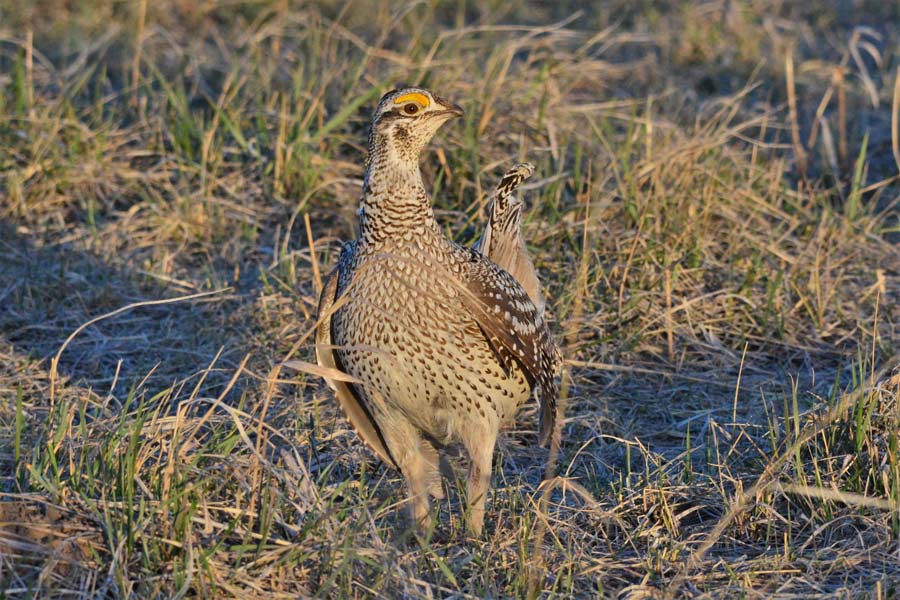The sharp-tailed grouse were on display ahead of chicks hatching
Published at
Bouncing across the desert looking for new families of Burrowing owls, I saw a familiar sight of a male Columbia Sharp-tailed grouse displaying. I was surprised to see him because it is almost time for the hens to hatch their young.
It was still early in the morning, so I decided to take a few pictures and see why he was spending all the energy stomping the ground, puffing out his purple neck air sacks and rubbing his two center tail feathers together. About 15 minutes later, another male showed up and they sparred but did not fight. Things just did not add up, but I was happy to see them as I had missed the major “sharpies” shows earlier this year.
It was not long before I had answers — two females came wandering out of the sagebrush and into the tall grass. Then I remembered that the males usually stay around the breeding leks just in case a female loses her nest or chicks. Apparently, two hens had lost their nest and returned to the lek to begin again.
As the Sage grouse numbers continue to fall in the high desert areas, the sharpies continue to spread and grow in population. These four birds were in the area between Idaho Highway 33 and the Egin/Hamer Road, and west of the Henrys Fork of the Snake River. Twelve years ago, there were seven large sage grouse leks in that area that I helped keep track of and now there is only one small lek. The first time I have ever seen Sharp-tailed grouse in that area was two years ago. In recent years, wildfires have destroyed portions of the sagebrush, replacing it with grassland which is preferred by the smaller grouse.

After getting a few pictures, I continued across the area finding a lone Burrowing owl, sitting on a mound of dirt where it appeared a badger had dug up its nest of owlets. When I got to the frontage road the runs from Sage Junction to Hamer, I also found another owl nest had been destroyed by a hungry badger. A nearby nest had four owlets peering over the edge of its hole.
Most of the Idaho Columbia Sharp-tailed grouse reside year-round in eastern Idaho and are plentiful enough to have a hunting season for them. Generally, the season runs during October with a daily limit of two birds and a special permit is required to hunt them.
My favorite places to catch them displaying are in Fremont, Madison, Teton and Bonneville Counties in the upper grasslands including CRP allotments after I gain permission to enter them. They will usually start gathering at the leks in early May with the hens usually nesting nearby in heavy grass or sagebrush.
When looking for them, the first thing you will probably see resembles popcorn popping. The males raise their tails, exposing the white feathers on their rump and the underlying tail feathers. As they dance to attract the females, they stomp their feet rapidly as they fly in tight circles while they puff out their purple air-sacs and raise their yellow eyebrows. They are beautiful to watch. At the height of their breeding season, if they are flushed by a hawk or you pull up to them, just wait about 15 minutes and they usually come running or flying back.
Most of the displaying and dancing is over for this season, but hopefully next year will be a good year to find and watch them.
Those of you who raise raspberries, this next month is interesting to watch your patch as colorful males of a nesting female will often borrow a few berries for her and the kids. Lazuli buntings, Black-headed grosbeaks, Bullock’s orioles, Cedar and Bohemian waxwings and even hummingbirds usually take a few berriea while robins will eat all of them if given a chance.
Living the Wild Life is brought to you by The Healing Sanctuary.


